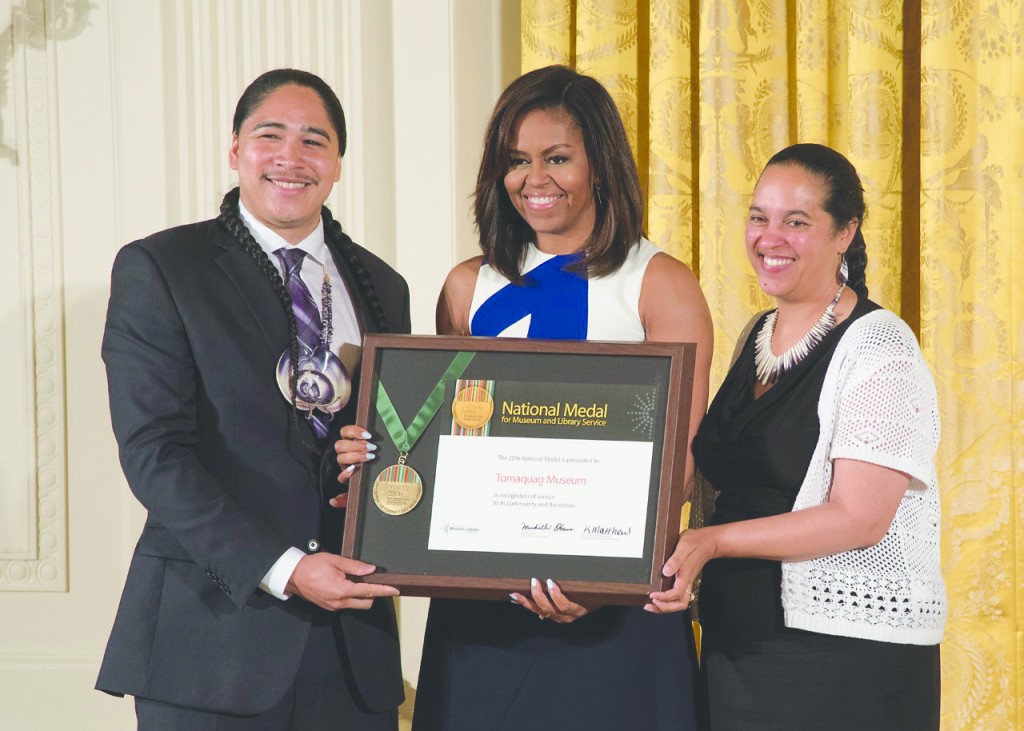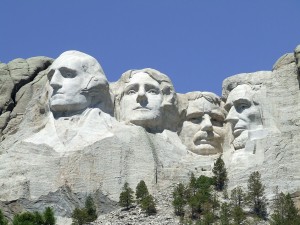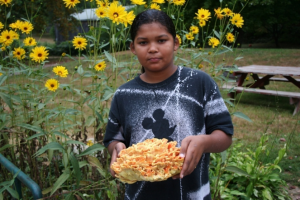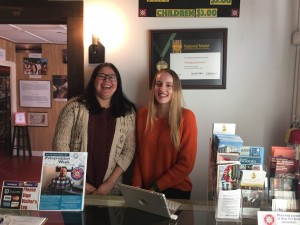 It is quite damning that in 2019, the Narragansett people of Rhode Island still face hardships and discrimination on the very land they have called home for thousands of years. But despite their difficulties, this is not a community without spirit, nor is it a community that lacks voices. One of loudest and most recognized of those voices speaks eloquently and without compromise for the justice and fair treatment of her people. Her name is Lorén Spears. Spears currently is the executive director at Tomaquag Museum in Exeter and former two-term Tribal Councilwoman of the Narragansett Tribe. I recently met with her to discuss what motivates her and why she will never cease to advocate for Indigenous people in Rhode Island and across the Americas.
It is quite damning that in 2019, the Narragansett people of Rhode Island still face hardships and discrimination on the very land they have called home for thousands of years. But despite their difficulties, this is not a community without spirit, nor is it a community that lacks voices. One of loudest and most recognized of those voices speaks eloquently and without compromise for the justice and fair treatment of her people. Her name is Lorén Spears. Spears currently is the executive director at Tomaquag Museum in Exeter and former two-term Tribal Councilwoman of the Narragansett Tribe. I recently met with her to discuss what motivates her and why she will never cease to advocate for Indigenous people in Rhode Island and across the Americas.
Amadeus Finlay (Motif): What led you to become a voice for your people?
Lorén Spears: I believe it was seeing my mother, aunts, grandparents and other extended family and tribal community members out there being a voice for our community — people like Princess Red Wing who was an activist, an educator, an artist and a culture bearer.
I grew up doing programs for Tomaquag Museum, which included singing, dancing and reciting pieces. It was participating and seeing the adults and elders in my community being a voice for our people and advocating for the truth to be told. Ella Seketau once stated, “The truth is the truth, and it is just waiting to be recovered.”
I think of Princess Red Wing, born in 1898, living in the 20th century. She was an educator and activist. She refused to support the denigration of the Black Hills for the Mount Rushmore monument that was being corrupted. She wrote letters to political leaders to change injustices here and across the country. One, in particular, is the site of the Great Swamp Massacre. She wrote to political leaders to stop them from having Victorian-type teas out on the lawn, near the four monuments recognizing the four colonies that took part in King Phillip’s War, to celebrate their “victory” over the Narragansett people. Because of her work, there is now a monument in the center [of those monuments], the tall obelisk, that represents the Indigenous people. We also have an annual pilgrimage to that site to remember and honor those who passed and allowed us to be here today to continue our traditions, foster our community and empower our youth for the future.
AF: Do Narragansett people still face discrimination?
LS: There have been so many injustices over the last 400 years, including genocide, displacement, disease, enslavement, war, boarding schools, alcoholism, forced assimilation and legal genocide, and in my lifetime, I’ve seen many forms of discrimination. There is economic discrimination, educational racism, job discrimination and gender discrimination, as well as overall bias and racism. There is, statistically, an underrepresentation of Native American people in higher education. There are many layers to the reasons why, but discrimination is one of them. There are many injustices, including high mortality rates due to an inequitable healthcare system, high murder rates, high arrest and incarceration rates and high suicide rates. Indigenous people all know someone who has been arrested unjustly, committed suicide or been murdered. In most cases, the person committing the crime gets away with it. There is a lack of value on Indigenous people, and often they are not part of the network of power that allows these perpetrators to go free. I know several people who have been murdered. These are hard stories to tell, but we tell them just the same [for those who] no longer have a voice to defend themselves. Someday, we hope to see justice for our people. Most of us, including me, have been harassed in one way or another, stopped by police unjustly, tracked in the educational system for failure and victimized by hate, bias and prejudice.
AF: What are the most important successes of your career?
 LS: The creation of Nuweetooun School, that I founded and ran from 2003 to 2010. Unfortunately, the economy and the historic floods forced us to close its doors. However, it had its impact in its time, nurturing Native American youth and empowering them through education that included their own culture, history, language and arts while integrating educational norms of today.
LS: The creation of Nuweetooun School, that I founded and ran from 2003 to 2010. Unfortunately, the economy and the historic floods forced us to close its doors. However, it had its impact in its time, nurturing Native American youth and empowering them through education that included their own culture, history, language and arts while integrating educational norms of today.
I also feel very blessed to be the executive director of Tomaquag Museum, and have grown this organization from a totally volunteer organization to a growing staff now of six. In 2016, the Institute of Museum and Library Services National Medal at the White House was awarded to us by former First Lady Michelle Obama.
The third thing I will share is the creation of the Indigenous Empowerment Network (IEN) here at Tomaquag Museum, which is a program designed to empower the Indigenous population of Rhode Island through our network of partners. The Indigenous Empowerment Network creates opportunities for education, job training, small arts business development, entrepreneurship, mentoring and wellness, with the overall goal of bringing Indigenous people out of poverty while empowering them within their culture.
AF: How does your work at Tomaquag Museum fit into supporting your work as an educator and activist?
LS: The work that I do ties in to both of those things in many, many ways. The work that I do at the museum is mostly education: educating the public around Native history, culture, the arts, spirituality, environment and our life ways. At the museum we share a first-person perspective, we share our stories. The stories are a form of activism. They share our history, the historical trauma that took place here, how it affects us today, and what we do to overcome these barriers that have been put in our way.
I’m not only an educator, but an advocate for equal rights, justice and equity. Through the Indigenous Empowerment Network, we work to create opportunities for the Native American community to have better access to education, increase arts job opportunities, provide job readiness training and entrepreneurship training, and use our vast network of partners to provide these opportunities beyond our museum with the ultimate goal of bringing indigenous people in Rhode Island out of poverty.
Through IEN, we advocated for the right to use tribal ID in the 2016 election; it is federal ID, it was ridiculous that it wasn’t accepted regularly. We also advocate around a variety of social justice issues such as environmental issues, including Standing Rock, Invenergy Power Plant in Burrillville, Mashapaug Pond and other environmental issues. We educate on educational and health disparities, and lead programs such as Arts & Wellness to begin the process of unpacking the historical trauma we have faced.
AF: What can our readers do to support Indigenous America?
 LS: Well, first they can become more knowledgeable about our history and our cultures. Then they can become allies and support our initiatives and social justice movements. One of the most important movements for all of humanity is the environmental justice movements to combat climate change. We all need to work together and collaborate on this important work. There are those who can be out on the front lines, being visible as water protectors, land protectors and air protectors, but those of us who may not be able to do that can do many other things as allies, such as write our politicians, write to the newspaper, start a blog to discuss these issues, sign petitions, vote, become more energy efficient, make better food choices to support local food producers and support activism with donations of time, money, other resources. We have many partners at Tomaquag Museum; I think of them as allies, they share and amplify our voice and the voice of the Indigenous peoples.
LS: Well, first they can become more knowledgeable about our history and our cultures. Then they can become allies and support our initiatives and social justice movements. One of the most important movements for all of humanity is the environmental justice movements to combat climate change. We all need to work together and collaborate on this important work. There are those who can be out on the front lines, being visible as water protectors, land protectors and air protectors, but those of us who may not be able to do that can do many other things as allies, such as write our politicians, write to the newspaper, start a blog to discuss these issues, sign petitions, vote, become more energy efficient, make better food choices to support local food producers and support activism with donations of time, money, other resources. We have many partners at Tomaquag Museum; I think of them as allies, they share and amplify our voice and the voice of the Indigenous peoples.
AF: What young Indigenous voices are coming behind you in Rhode Island?
LS: There are so many, but the ones who come to mind are Lynsea Montanari, who is an up-and-coming Narragansett artist who does “artivism.” She has been portrayed in a mural in downtown Providence representing our people, titled, We are Still Here. She’s a talented young artist, educator and college student at College Unbound. She is a former educator for Tomaquag Museum and still serves as a per diem educator from time to time. Sherenté Harris is a Brown/RISD double major who is using art as a form of activism. Sherenté is also two-spirited [trans] and has championed the LBGTQ community.
I think people like Samantha Fry, who is our Indigenous Empowerment Network coordinator, are among the young people who are leading important work, and will soon lead organizations like Tomaquag Museum, create social justice movements and amplify Indigenous voices.